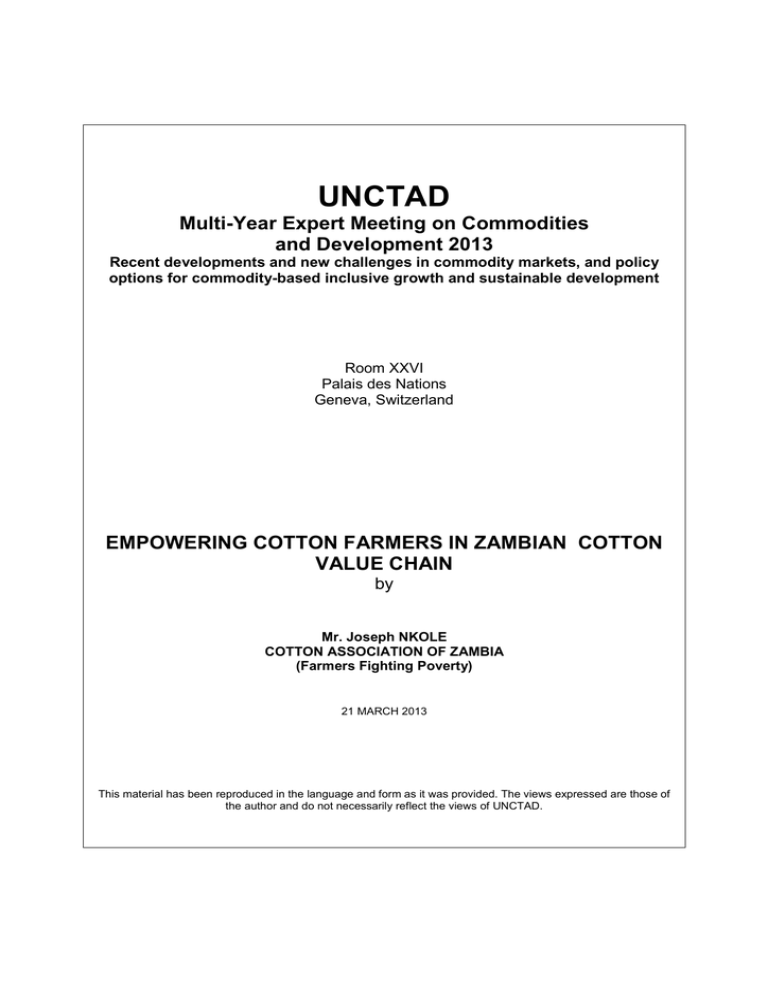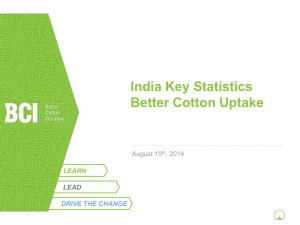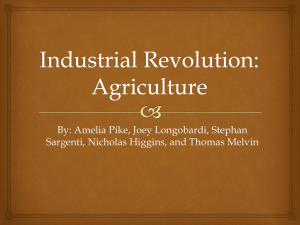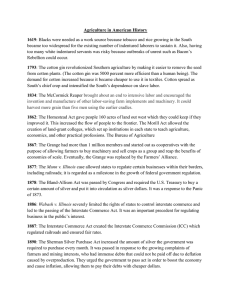UNCTAD Multi-Year Expert Meeting on Commodities and Development 2013
advertisement

UNCTAD Multi-Year Expert Meeting on Commodities and Development 2013 Recent developments and new challenges in commodity markets, and policy options for commodity-based inclusive growth and sustainable development Room XXVI Palais des Nations Geneva, Switzerland EMPOWERING COTTON FARMERS IN ZAMBIAN COTTON VALUE CHAIN by Mr. Joseph NKOLE COTTON ASSOCIATION OF ZAMBIA (Farmers Fighting Poverty) 21 MARCH 2013 This material has been reproduced in the language and form as it was provided. The views expressed are those of the author and do not necessarily reflect the views of UNCTAD. COTTON ASSOCIATION OF ZAMBIA (Farmers Fighting Poverty) “EMPOWERING COTTON FARMERS IN ZAMBIAN COTTON VALUE CHAIN” PRESENTATION TO THE MULTI-YEAR EXPERT MEETING ON COMMODITIES 21ST MARCH 2013 ROOM XXVI - Palais des Nations, Geneva Plot 4297 Buyantanshi Road Zamseed Premises, Industrial Area P O Box 32281 LUSAKA Tel: +260 211 241819 Fax: +260 21241841 Email: caz@zamtel.zm Website: www.caz@cotton.org.zm CONTENT OF THE PRESENTATION • • • • • • Introduction Cotton Value Chain in Zambia Efforts to Empower Zambian cotton farmers Challenges Way forward Conclusion Introduction • Cotton is one success story of Zambia’s turn to a market economy. • Major and growing sector +/- 460,000 smallholder farmers. • Formation of CAZ • Vision, activities Introduction 450'000 400'000 Cotton is one success story of Zambia’s turn to a market economy. Major and growing sector +/- 460,000 smallholder farmers. Formation of CAZ , Vision, activities 350'000 300'000 250'000 200'000 No. of farmers 150'000 Production mt 100'000 50'000 0 Cotton Value Chain in Zambia Production 3500 3000 2500 2000 1500 Average Seed Cotton Price/Kg Price/kg 1000 500 0 1999/2000 2000/2001 2001/2002 2002/2003 2003/2004 2004/2005 2005/2006 2006/2007 2007/2008 2008/2009 2009/2010 2010/2011 2011/12 Low & Static yields Farmers lack liquidity & rely on Ginners -Input supply -Market -Extension services -Ginners dictate prices -Weak negotiation power of farmers -Volatility of international cotton prices. Average Seed Cotton Price/Kg Price/kg Agrochemical dealers COTTON VALUE CHAIN IN ZAMBIA Cotton/Ginning Companies Extension Service providers Lint Seed Cotton Production Seed Cotton Processing Yarn Fabric Material Garments Seed Cotton by-product processing/manufacturing Cooking oil Fuzzy Seed Cotton Cake Smallholder Farmers Ginning Companies Ginning Companies Spinners Cooking Oil Plants Weavers We Textile Retailers GINNING Around 10 Ginning companies All foreign owned multinational 17 ginneries; 11 saw gins; 6 Roller Gins Ginning capacity 361, 800mt GOT 41% Average Bale weight 180kg TEXTILE INDUSTRY Obsolete equipment Lack of competitiveness Only 4 spinning mills Influx of second Hand clothes EFFORTS TO EMPOWER ZAMBIAN COTTON FARMERS • CAZ in collaboration with International Trade Centre (ITC) South-south Co-operation for improved production through training events in: -China -India -Senegal -Turkey • CAZ in collaboration with International Trade Centre (ITC) South-south Co-operation in market-related activities in textile producing countries: -Bangladeshi -China -Thailand -Turkey -Vietnam Building on these linkages, CAZ has been able to change the cotton sector in the following ways: -Farmer Empowerment Through the exposure and training of farmers, CAZ has built a strong contract negotiating team -Transparency and partnership along the value chain Farmers have engaged in self-financing and learning from each other and improve the trust levels. - Indigenizing and adding value to the cotton value chain Farmers have established a farmer owned ginning facility. - Building partnership with prefered buyers. Through the above innovation, farmers with support of ITC have made strong partnership with spinners. - Managing Farm Inputs - Farmers are using the business links created in Asia to become independent of ginning companies. - Managing Farm Input Support Programme Government. - Creating an institutional infrastructure that supports farmers Farmers liaising with cotton related institutions Farmers demanding for enhanced research and development. - Improving Regional collaboration Due to international exposure and facilitated interchange with cotton stakeholders in Africa, CAZ has been instrumental in the formation of MOZAZIMA. CHALLENGES • Lack of Transparency and Price Risk Management • Lack of Value Addition at farmer level • Cotton contamination and Quality control • Low local textile production • Weak apex farmer organisation • Poor Regulatory Framework WAYFORWARD • Implement strategies and systems to protect the sanctity of contracts and enforcement. • Establish common buying and selling points for inputs and produce. • Capacity building and strengthening of farmers groups to participate in value addition. • Practical support by Government and financial investment into the development of the sector. CONCLUSION • Opportunity to strengthen the position of smallholder producers in the market. • Opportunity to connect industry to the market and assure the future of cotton in Zambia. • Knowledge leads to transparency for trust to flourish and industry to grow. • Farmers have a choice to produce or not produce cotton; • Farmers broke the fundamental power structures. • Regional transparency benefits farmers in MoZaZiMa. • Farmers engaged in value addition to revive textile and clothing industry. Thank you Merci beaucoup pour votre aimable attention





